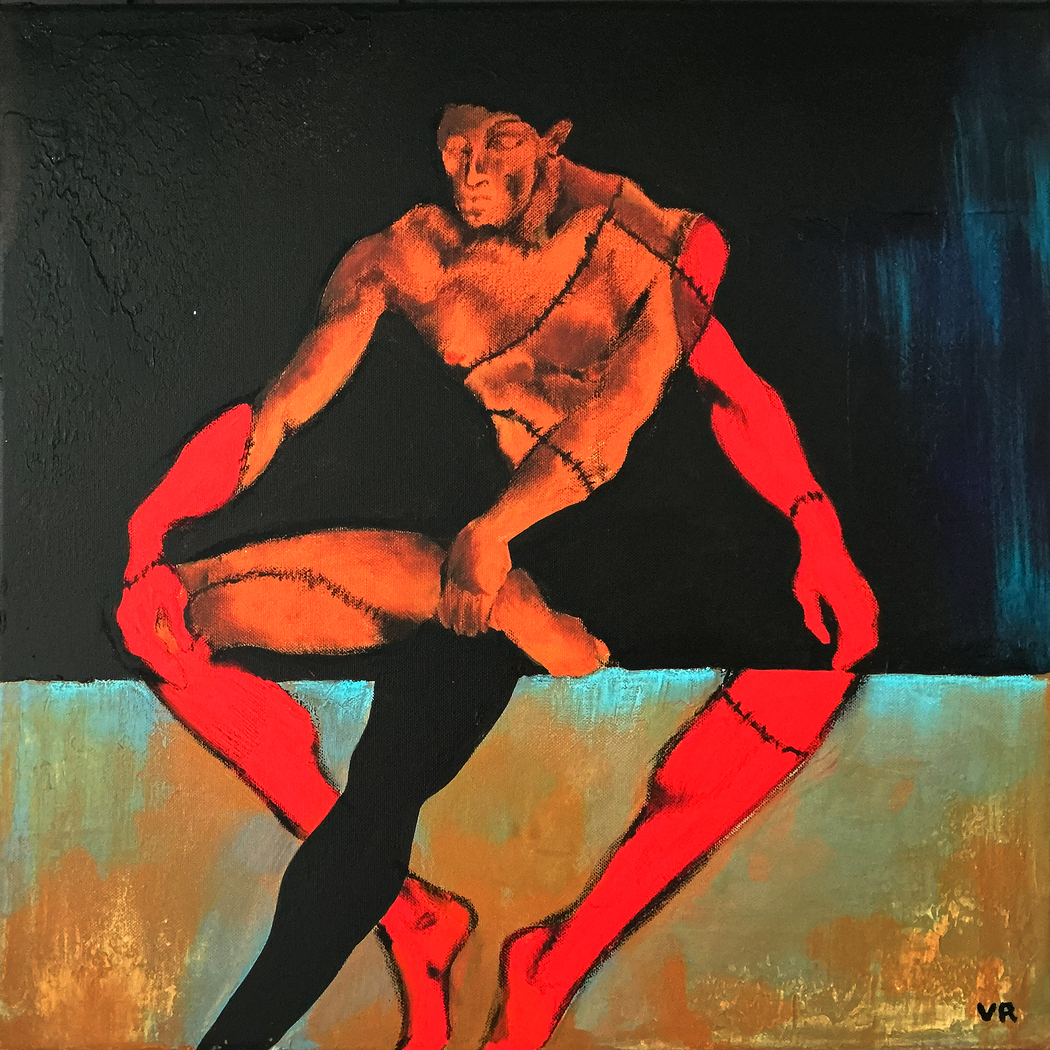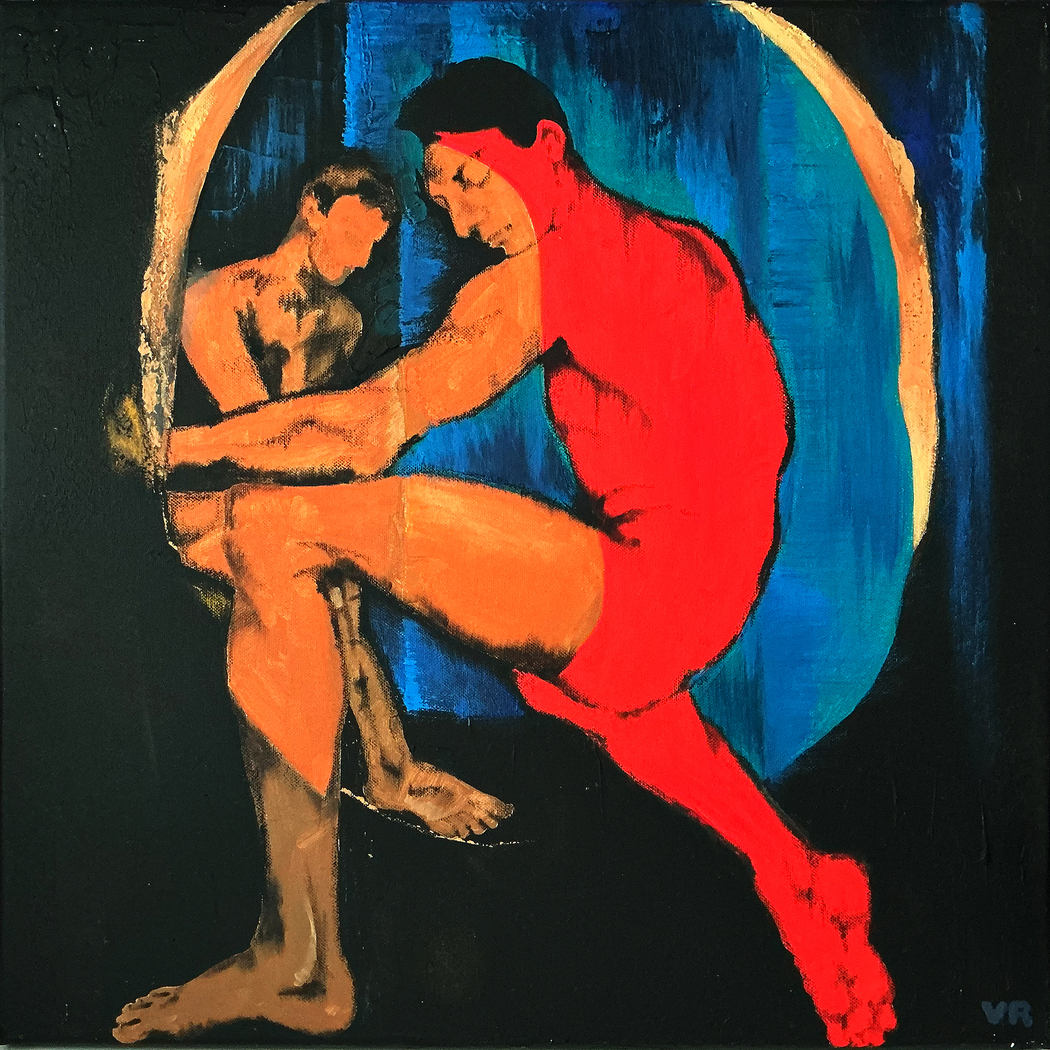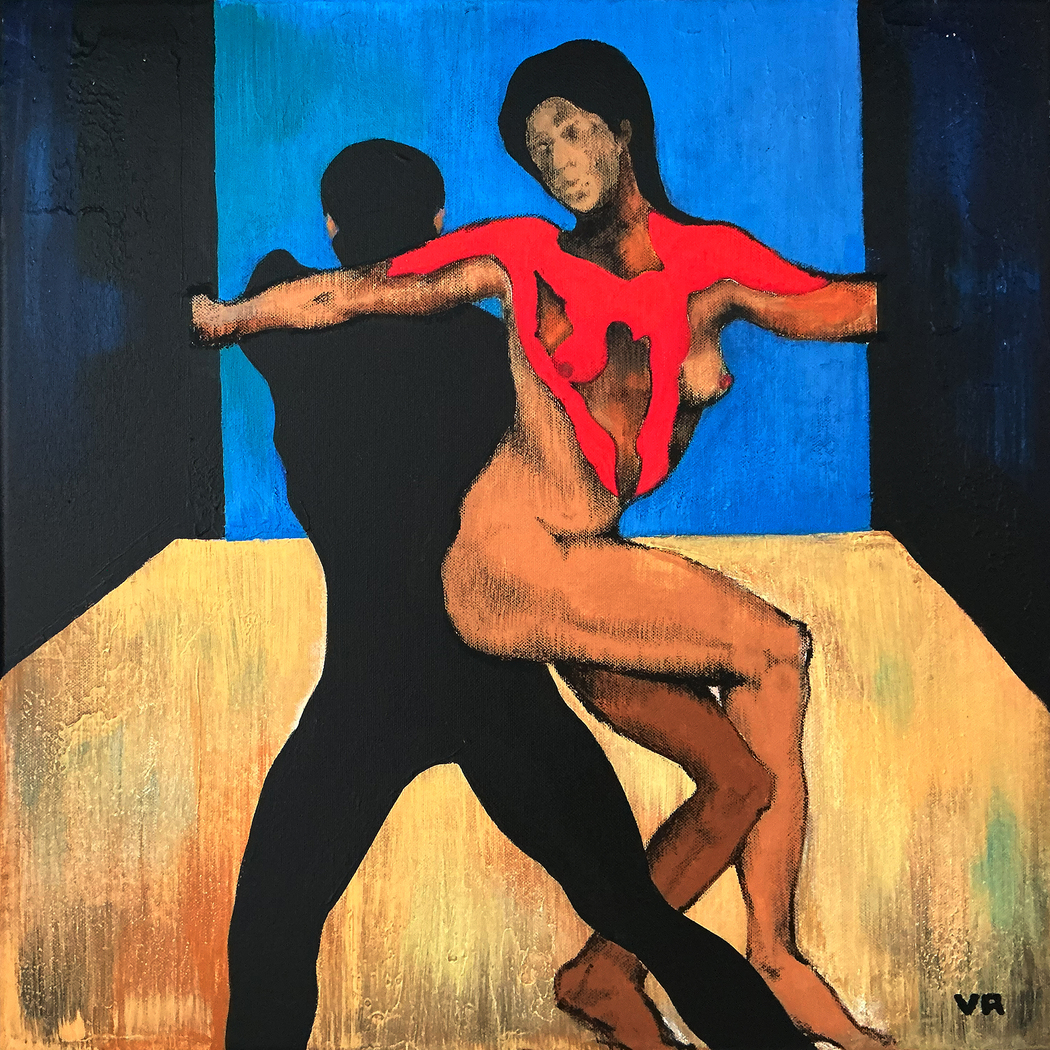Veera Romanoff
Born: 1969
Lives and works: in Finland and the UK
Veera Romanoff is a multidisciplinary artist and architect whose practice spans painting, installation, and spatial research. She holds a degree in architecture and fine arts, and her background deeply informs her visual language. Romanoff’s work can be described in three words: tension, structure, transformation.
Operating at the intersection: of visual art and spatial thinking, her artistic discipline explores the body as a site of perception, resistance, and memory. Through layered compositions and bold use of color, she constructs emotional and conceptual environments that challenge the boundaries between internal and external, material and symbolic.
Website | Instagram

Your works are known for their bold use of color and emotional depth. How does color function as a language in your work, and how do you decide on the color palette for each piece?
Color in my work is neither illustrative nor expressive in the traditional sense. I treat it as an autonomous layer of meaning—a density that structures perception. Color does not accompany form—it intervenes, disrupts, redefines. The choice of palette does not follow a narrative logic; it emerges from internal tension, from the rupture between body and space. At times, color functions like a symptom; at others, like a glitch in the system of perception.
In your artist statement, you mention the influence of Matisse’s Fauvism. Can you elaborate on how Fauvism has shaped your artistic approach, and how you blend it with your own interpretation of modernism?
I am less interested in Fauvism as a style than in its historical gesture—the radical liberation of color from submission to reality. What I borrowed from Matisse is not his palette, but his freedom. My own approach, however, gravitates toward a different paradigm—architectural modernism, where structure, order, and gravity are essential. I work at the intersection of these vectors: expressive surface and rational construction; sensual form and abstract framework. It’s not a synthesis, but a polarity in which I seek tension.
 Veera Romanoff | Transformation | 2024
Veera Romanoff | Transformation | 2024
Your background as both an architect and an artist is fascinating. How does your architectural experience inform your artistic practice, and do you find that the two disciplines influence each other?
Architecture gave me a language in which emptiness is as meaningful as mass. I carry this language into painting, but translate it into the corporeal. My compositions follow the same principles as spatial design: gravity, rhythm, counterbalance, rupture. The figure in my work is not a body, but a carrier of tension between the internal and the external. Painting allows me to treat space as a field of perception—where layering, displacement, and the loss of stable coordinates become possible.
Time plays a significant role in your work, both as a subject and as an underlying force. How do you capture the flow of time in a visual medium like painting?
I’m not interested in linear time—with its narratives, reference points, and familiar logic. In my work, time functions as a field of tension where past and future collapse into the moment of form dissolution. I explore transitional states: bodies suspended in motion, gestures charged more with ambiguity than with action. Time appears not as a storyline but as pause, glitch, lingering resonance. It is more a gravitational field than a chronicle.
 Veera Romanoff | Reflection | 2024
Veera Romanoff | Reflection | 2024
You speak about the crumbling of old orders and the creation of new ones in the modern world. Can you explain how this idea informs your artwork, and what message you hope to convey about the evolution of society and art?
For me, contemporaneity is neither progress nor regression, but a state that follows collapse. The legacy of the 20th century is not only modernism but also its impossibility. I offer no utopias, no appeals to nostalgia. My works are born on the ruins of cultural constructs—in a space where symbols have been devalued, and the body remains the last source of authenticity. It’s an attempt to speak from where language no longer holds. In this context, art is not a message but a field of rupture, silence, and rewriting.
Your work bridges the gap between abstraction and modern technology. How do you balance traditional artistic values with the advances in technology, and what role do you see for technology in the future of visual art?
I’m not interested in superficial integration of technology. I don’t digitize painting or mimic digital aesthetics. But I closely observe how technologies alter our perception. The body in my work often behaves like an interface—fragmented, deformed, stripped of continuity. This is more of a response to the digital environment than its representation. Technology, for me, is not a tool but a new mode of subjectivity—one I engage with through traditional media.
 Veera Romanoff | Transition | 2024
Veera Romanoff | Transition | 2024
You’ve participated in exhibitions in places like LA Art Show and Art Fair Miami. How have these international platforms shaped your career and influenced your artistic vision?
Working with international art fairs and exhibitions is less about exposure than about testing the universality of visual language. The context shifts radically, but figure, form, gesture—remain. It brings me back to fundamental questions: What keeps an image in the field of attention? How does it function outside its cultural frame? These experiences have helped me make my practice more precise, more focused, and at the same time—more autonomous.

Leave a Reply
You must be logged in to post a comment.